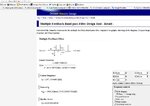neazoi
Advanced Member level 6

I would like to build a simple 1200 baud asynchronous modem out of discrete components (simplest possible) for my project **broken link removed**
I have found this paper and on figure 15, it describes a way which seems easier to me to implement using discrete components. The non-coherent fsk demodulation seems feasible to me for the demodulation, which I think it's the hardest part.
Have you ever seen such projects in magazines or on the net, so I won't start from scratch?
Any other ideas/simulations would greatly appreciated.
Regards
I have found this paper and on figure 15, it describes a way which seems easier to me to implement using discrete components. The non-coherent fsk demodulation seems feasible to me for the demodulation, which I think it's the hardest part.
Have you ever seen such projects in magazines or on the net, so I won't start from scratch?
Any other ideas/simulations would greatly appreciated.
Regards




